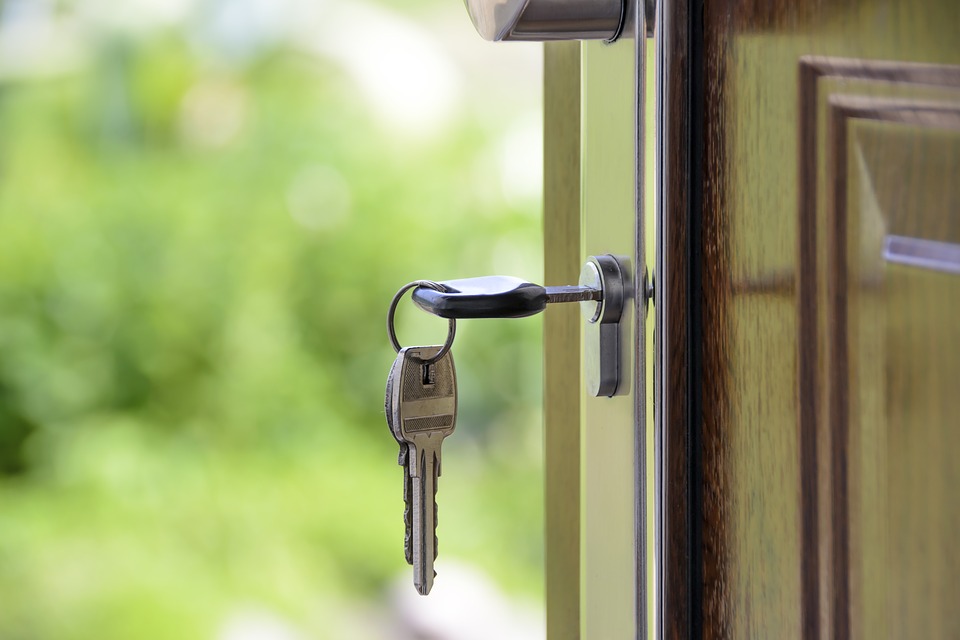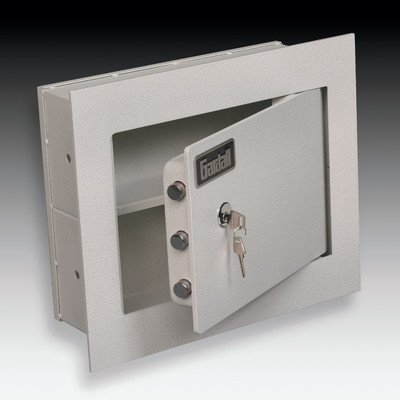The summer heat may make it hard to believe, but we are bearing down on college move-in season. This means students returning to living with roommates after a summer spent at home. For new college students, it could mean living with roommates for the first time. Of course, college students only make up part of the population that live in shared homes. As this Pew Research Center report points out, almost a third (31.9%) of adults live in a shared household. With the number of people living with roommates rising — whether due to school living situations or other circumstances — the need for addressing unique security concerns that come from shared living situations has also grown. In this post, we share our tops security tips for those living with roommates.
We’ll begin with some ideas for limiting access to your shared home. From there, we’ll discuss keeping valuables out of sight and out of mind from both residents and visitors. Additionally, we’ll also examine how adding a burglar alarm system can add both security and peace of mind. Furthermore, we’ll discuss how adding video surveillance can help increase security in shared living situations. Let’s begin with some ideas for controlling who enters a shared living space, and when.
Control Access to Your Home
People living with roommates often experience more traffic in their homes than those in other living situations. Of course, part of this stems from the comings and goings of those living in the home. Much of it also comes from the significant others, friends, and family of the residents. In the case of a missing item or broken valuable, it can get hard to track what might have happened. Part of alleviating this danger involves limiting access to the home to the right people. In this section, we will discuss a couple ideas for gaining this control.

Re-keying locks can greatly reduce the number of keys others have that will unlock a home’s doors, especially for those living with roommates.
Re-Key Locks After Every Change in Living Situation
We recommended changing the locks after buying a new home in our 7 Tips to Improve Home Security for New Homeowners. As we pointed out in that post, multiple copied of keys get given out to significant others, workers, and neighbors over the course of time. It only makes sense to start fresh when moving in to a new home. The same rings true during living changes in multiple-resident households.
We recommend having your locks re-keyed every time the living situation in a home changes. Failing to do so simply enhances the chances that someone willing to break in to the home would have a key. Sometimes this happens because someone close to a former resident ends up being less than trustworthy. Other times it happens because old keys can fall into the wrong hands unintentionally. Either way, if you live with roommates, we encourage taking this precaution to increase your home security. Let’s look at one more way to make sure those living with roommates know who can enter their home, and when.
Use Keypad Locks to Limit and Track Access
Using keypad locks to control access to a shared household has a couple advantages. For one, it can help control the “key copies” issue described above. If work must be done on the home when nobody will be present, workers can gain entry without getting a key. After completion of the work, residents of the home can delete the code that provided access. This greatly enhances the security of any home.
Furthermore, those living with roommates may give others their code for a variety of reasons. Family members, movers, or close friends might end up needing quick access to the residence. Using smart keypad locks allows users to track codes used to enter a home. Imagine coming home to find something moved or missing. If you have a smart lock, chances are that someone used a code to enter the home. The ability to track this information can help figure out which resident, or which resident’s visitors, may have paid a visit. This level of security and accountability can greatly benefit those living with roommates. Now, let’s look at a practical way for residents of shared homes to keep valuables out of sight and out of mind.
Use a Small Safe to Lock Up Valuables
Living with others means that your possessions end up in front of many, many people. Shared homes often receive 3-4 times the visitors of their non-shared counterparts. In the case of college students, residents often move in with complete strangers. Safes can help shield valuables from the eyes (and hands) of others. This goes for all of a home’s residents and invited guests.

Using a small safe, such as this Gardall model, to protect your valuables could keep your possessions safe from roommates and burglars alike.
Of course, this also goes for uninvited guests. In the case of a break-in, safes come in especially handy. Let’s say that the “friend of a friend” from a party or other get-together sees something worth coming back for later. While certainly not an ideal scenario, a safe can keep the most important possessions out of a criminal’s sight. If you do follow this security tip, we recommend you follow our 10 Best Practices for Safes. That post will help you select the proper safe. It also provides some valuable best practices for safe installation and maintenance. Now, let’s look at another important piece of security equipment that can add security to any home, including shared homes.
Install a Basic Alarm System
A little while back, we created a post detailing 5 Ways to Keep Your Home from Becoming a Target for Burglars. In that post, we explained that potential burglars look for a few things while scoping out target homes. One things on any burglar’s wish list? Evidence of expensive or valuable items. The more people in a home, the more likely that a passerby could see something of interest. After all, shared households often house multiple televisions, smart phones, tablets, and sets of jewelry or other valuables.
Additionally, thieves also look for houses with minimal evidence of home security measures installed. Seeing no outside alarm siren, security yard sign, or stickers with a security company’s name on them often points the way to a clear course for a burglary. In households where roommates often make plans together, the importance of installing an alarm system increases. Perhaps you plan on camping, vacationing, or taking in a ball game with your roommates. This leaves a household with several people’s worth of valuables empty. A security system can help provide burglar monitoring for shared households in the residents’ absence.
At this point you might ask, “What if we rent our shared living space instead of owning it? Can we still install home security?” The answer is most likely yes. As we pointed out in our Security Advice for Renters, wireless alarm equipment can be installed without making alterations to the premises. This often allows renters to install equipment without upsetting landlords. In fact, landlords often welcome the extra security that an alarm system brings. Let’s look at one more piece of security equipment that helps those living with roommates monitor their homes.
Use Cameras to Add Security and Create Accountability
Installing cameras can provide both peace of mind and security for those living with roommates. In instances where shared living spaces experience frequent changes in residents, cameras in shared areas can keep the revolving cast of roommates accountable. For one, cameras in main living spaces can ensure that residents or guests do not wander into the wrong bedrooms when alone in the house. Some residents and/or owners of shared living spaces even install cameras to watch over the refrigerator. Those living in shared houses generally appreciate these security features. In addition to potentially catching someone committing a crime, cameras can also protect residents from false accusations!

Installing surveillance adds a valuable level of security and crime deterrence, especially within shared households.
Of course, home surveillance cameras do more than record the residents of a shared home. Cameras will record any crimes committed in the residents’ absence as well. As we pointed out earlier, shared households can make for a tempting target for a break-in when empty. If anyone does act on this impulse, a home surveillance system goes a long way in seeing what happened. In addition to making it more likely to solve a crime, cameras also make crime less likely to happen in the first place. Burglars often cite visible surveillance as a major deterrent when choosing a home to target. The power that cameras have to both record and deter crime has made them a popular form of security for those living with roommates.
Creating a Complete Security Plan for Living with Roommates
We hope that this post has given you some security ideas for those living with roommates. Perhaps this describes your living situation and has gotten you thinking of adding some security measures. Or maybe you know a family member or friend who could use these tips. Either way, we encourage you to contact us with any questions you have about the information presented here. We offer free home site surveys to evaluate security for people in any living situation. While on site, we can address safety and security concerns you and others may have. Additionally, we can make suggestions of our own based on what we see. Together, we can create a security plan to add as much security as possible for all residents of a home.
Feature Photo Credit: AlbertHerring on Flickr. Used under the CC BY 2.0 License.
